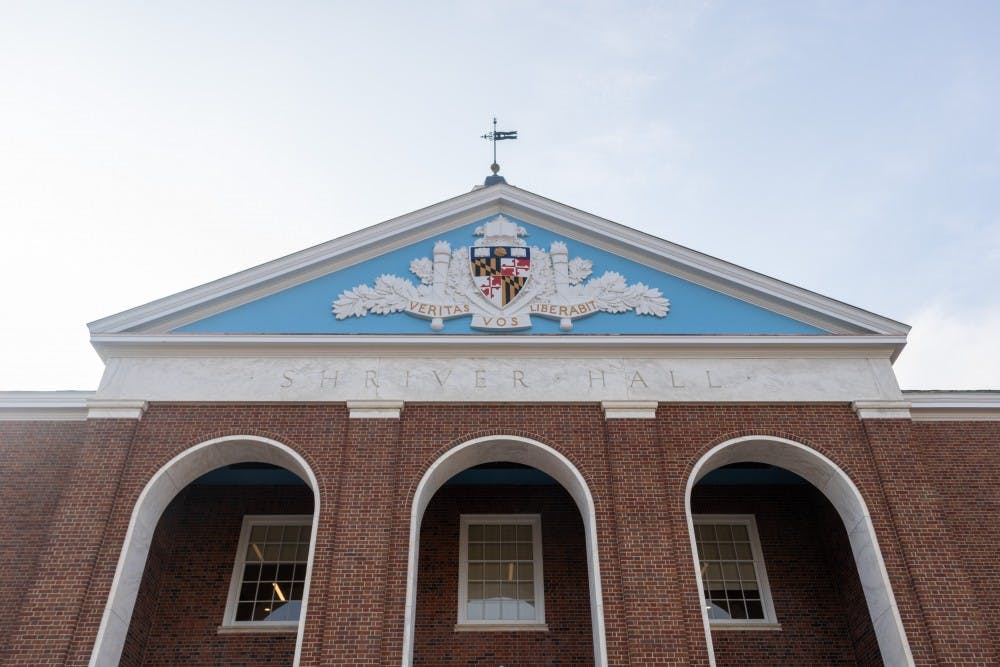After undergoing three semesters of renovations, Shriver Hall has been reopened to the Hopkins community. The renovation, which began during the fall of 2017, was slated to be completed by the beginning of spring 2018. University officials announced in February 2018, however, that the project would extend into the 2018-2019 academic year.
Though Johns Hopkins Facilities and Real Estate (JHFRE) originally planned on only replacing the auditorium’s lighting and electrical systems, the project expanded to include new features to the auditorium. The renovation was also delayed so that JHFRE could take measures to eliminate the possibility of asbestos buildup within the building.
Homewood Arts Programs (HAP) Director Eric Beatty described some of the new features that Shriver auditorium contains in an email to The News-Letter.
“The renovations in Shriver Hall auditorium will have many positive benefits for the Hopkins Symphony Orchestra and the Homewood Arts Programs dance and a cappella groups,” he wrote. “There are now about 100 theatrical stage lights, which will enable the orchestra musicians to much more clearly see their sheet music during performances and will provide a brighter and more inviting view of the full orchestra for audience members.”
The renovation also includes new, wider seats, along with a revamped stage and electronic systems. The lighting, projection and sound systems within the auditorium have been replaced with more reliable fixtures, including new film projectors, LED lighting fixtures and a 36 microphone sound board. Beatty further explained how the renovations would help student performance arts groups.
“The student dance groups will have a vast array of new light design options for each of their dances, with the ability to mix colors, angles and intensity in new ways,” he wrote. “The new rear projection screen can also be used by dance groups if they want to project images while they dance in front of the screen.”
He added that an improved sound system in the auditorium would allow a cappella groups to use Shriver as a performance space, though in the past they have preferred the acoustics in the Bloomberg Center for Physics & Astronomy’s auditorium.
Seating about 1,000 people in the auditorium, Shriver is the largest event space on campus. From Orientation week events to speaker series, many University and student-organized events needed to find new locations during the renovations.
Senior Samantha Albstein, Barnstormers theater group president and Ladybirds dance team treasurer, was glad that Shriver had finally been reopened. She emphasized that the already existing shortage of performance spaces at Hopkins had been worsened during the renovations.
“I’m very happy Shriver is reopening, because we need more performance spaces at this school. It affected the Ladybirds, because we lost the space that we usually use for our showcase, so we were very limited in terms of what dates we could use last year,” she said. “It’s never easy to get performance spaces here.”
Many other students agreed but also pointed out the addition of baby blue paint at the center of Shriver’s façade. Nick Xitco, the musical director for the Vocal Chords a cappella group, felt that the blue paint does not match with the architecture of the rest of the Homewood Campus.
“Is that the renovation? It takes us two years, and we put up this shitty blue triangle on top of one of the best buildings on campus?” he said. “I love this campus; I love this school; I love its aesthetic; and I feel like [the blue paint] totally fractures that vibe.”
Freshman Isabelle Geada agreed, adding that Facilities could have used a color that better matched the colors more widely seen at Homewood.
“They could have gone with a more subtle pastel or muted blue to match the aesthetics of campus,” Geada said.
Freshman Gabriel Feuerstein-Mendik agreed, adding that if nothing else, at least the blue paint made Shriver more identifiable.
“It sticks out like a sore thumb,” he said.
Beyond the building’s façade and technical changes made to the auditorium and other rooms within Shriver, the renovations also included changes to the lobby area. The various murals depicting life at Hopkins that were painted when Shriver was initially built in the 1950s remain unchanged. After the renovation, the lobby now includes plaques that aim to recontextualize the murals.
Students in a course titled Introduction to the Museum: Issues and Ideas wrote short passages accompanied by photos they found in the school archives that show a side of life at Hopkins that is different from what the murals depict.
Senior Casey Haughin noted that the murals from the 1950s failed to depict a single person of color — so she included a photo of black students from the 1970s sitting on the Shriver steps to show that these students were an integral part of life at Hopkins.
Haughin also included a picture of a dorm room jam session from 1952.
“These murals depict a version of Hopkins where the students almost do not exist. By leaving out the students, the murals suggest that student life is secondary at Hopkins,” she wrote on a plaque. “To these students, and many students before and after them, student life was anything but secondary.”
Class of 2018 alum Anna Silk noticed that though the murals show scenes of intellectual diversity and collaboration, they failed to depict racial and cultural diversity.
“Both show that a willingness to collaborate and share knowledge in the field of medicine remains consistent over the years,” she wrote on a plaque. “Unlike the mural, however, the photograph illustrates a scene of greater diversity, with a woman and a Sikh man involved in study, showing the progress of the school towards greater inclusion.”





